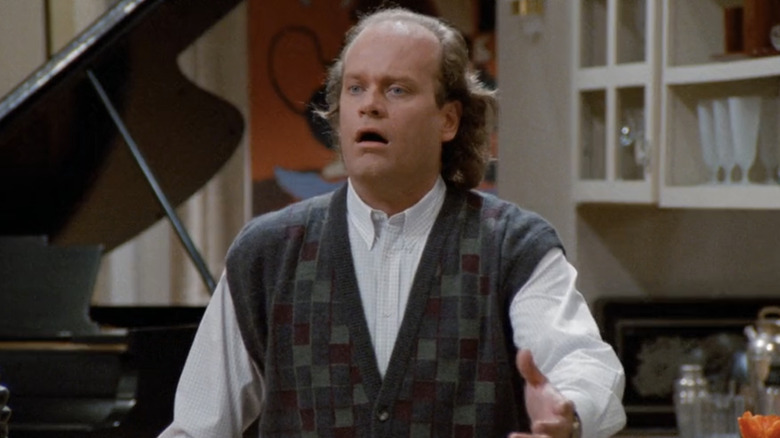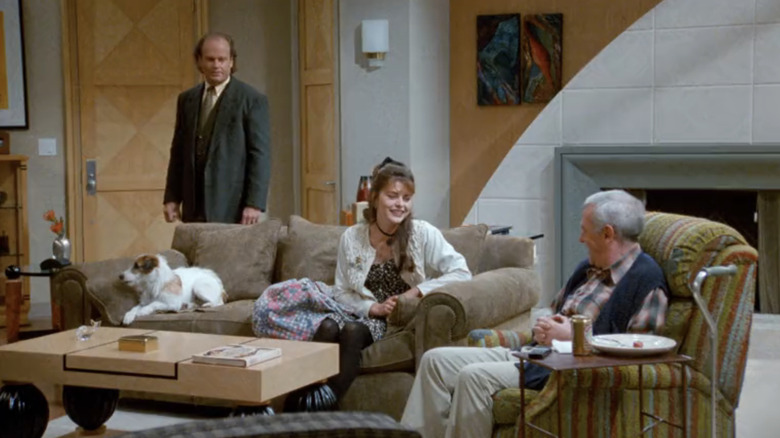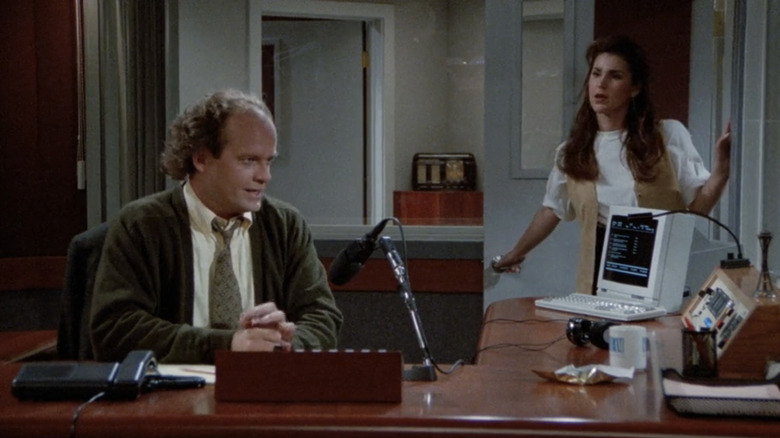There’s a lot about “Frasier” that conveys the comforting aura of a quintessential ’90s sitcom. The “Frasier” units, which price a stunning sum of money to construct, although designed with a definite wood-paneled aesthetic that has since turn into often called “Frasurbane,” nonetheless maintained the acquainted heat of sitcom units from the period. The reside studio viewers and snicker observe, the comedic rhythms, even the movie grain — all of it belongs to a golden age of sitcoms that needs to be acquainted to each single ’90s child that grew up on “Frasier,” “Pals,” and “Seinfeld.”
However there’s additionally one thing distinctly totally different about “Frasier.” Although it shared a lot in frequent with these different legendary sitcoms of the period, it was additionally fairly clearly making an attempt one thing new. It wasn’t simply that Kelsey Grammer’s Dr. Crane and his brother, Niles (David Hyde Pierce), have been the sort of elitist social climbers that you simply did not see fronting different sitcoms. It additionally wasn’t that the present’s humor regularly handled extra refined and arcane subjects than its contemporaries. From the very first episode of “Frasier,” the writers have been subtly subverting many sitcom tropes that had turn into well-established by the point the collection hit the air in 1993. The truth is, co-creator David Lee had one particular sitcom in thoughts for instance of what to not do when it got here to crafting “Frasier.”
Frasier writers wrote the anti-sitcom sitcom
“Frasier” ran for 11 seasons from 1993 to 2004, cementing its standing as one of many nice sitcoms within the course of — a legacy the neither disappointing nor outstanding “Frasier” revival present has but to reside as much as. Whereas many ’90s children may now consider the present as a consolation watch, the collection was truly fairly subversive in its personal method, and demonstrated a form of anti-sitcom sentiment proper from its pilot episode — an episode that, by the way, Niles actor David Hyde Pierce initially thought was “horrible.”
David Lee as soon as spoke to the Tv Academy Basis about writing that pilot, explaining among the guiding ideas that he and his writing workforce had in place. Particularly, the present’s writers got down to deconstruct and in some circumstances flat out rally in opposition to main sitcom tropes of the time, with Lee explaining how the rise of “Seinfeld” gave them an ideal formulation to subvert. In his personal phrases:
“On the time ‘Seinfeld’ was on the ascendency and it was the start of what I name ‘quick consideration span theater,’ the place the scenes and sitcoms had gotten shorter and shorter and shorter till it was principally, ‘Here is an exterior of a constructing, you come inside for 2 or three jokes, and then you definately’re on to the subsequent scene.’ Plenty of scenes, quick hits, and people work nice, they’re great. However we determined to strive one thing totally different.”
Lee went on to clarify his and his writers’ strategy to creating “Frasier” the anti-“quick consideration span theater” exemplified by “Seinfeld.” It began with the group writing “the longest scenes potential,” with Lee claiming that the aim was finally “to have an entire episode that happened in real-time, or to have an act by which there was just one scene, in different phrases form of like a play.” However this form of anti-sitcom strategy to writing a sitcom prolonged far past longer than regular scenes.
Frasier subverted each sitcom trope it might
To be clear, “Frasier” was not an entire overhaul of the sitcom format. Not solely was it created by three sitcom legends within the type of David Angell, Peter Casey, and David Lee of “Cheers” fame, however it additionally used the identical multi-camera capturing format utilized on each different sitcom of the second. “Frasier” made use of sitcom directing legend James Burrows, who additionally transitioned from “Cheers” to “Frasier” and who lent his skills to just about each present of the style ever made, together with “Pals.” Couple that with the studio viewers and the aforementioned normal 90s aura of the entire thing and you have a sitcom that, on the floor, is not precisely a revolution of the style.
However whenever you look extra intently, “Frasier” actually was making an attempt surprisingly unconventional issues all through its run. Take the black title playing cards that separate acts. These emblems of the collection are one more facet that grew out of Lee and his writers’ want to subvert sitcom requirements. As Lee went on to clarify in his Tv Academy Basis interview, the mindset was greatest summed up as, “Do we want these exterior photographs of buildings? Is the viewers good sufficient to know that if we’re in Frasier’s condominium that he is most likely inside an condominium constructing, and we need not see the surface of it?” Certainly, these kinds of creating photographs are so deeply embedded within the DNA of sitcoms that we barely discover it when the digital camera pans up the aspect of the “Pals” condominium constructing in New York accompanied by a fast musical sting to sign the beginning of a brand new scene, and even once we get a gap shot of Jerry’s personal constructing in “Seinfeld.”
For Lee and his crew, nonetheless, taking out this commonplace function of sitcoms was a necessity, resulting in the creation of the black title playing cards between scenes. Even then, “Frasier” pushed issues ever additional by eschewing any sort of musical accompaniment by any means. “We do not have to have music,” Lee famous, “and to at the present time I feel it’s nonetheless the one sitcom that doesn’t have interstitial music cues for no matter that is value.” In that sense, whereas “Frasier” is greater than able to lulling you into ’90s-sitcom induced consolation, it’s concurrently sustaining a deceptively disruptive strategy, giving us all but one more reason to like the present.


